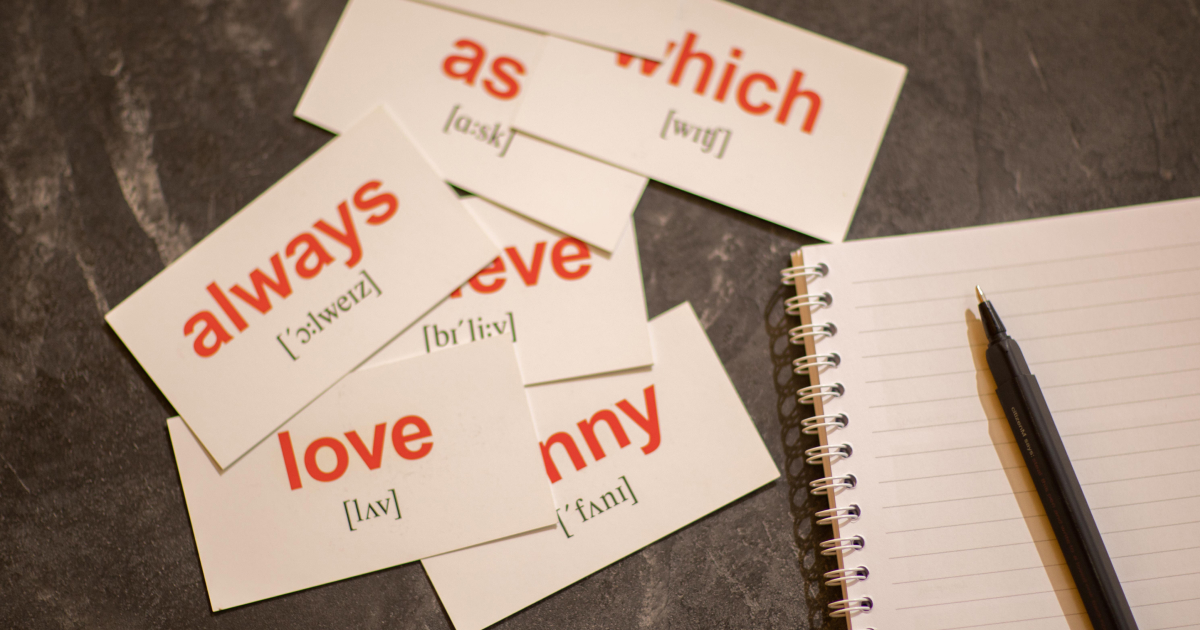How to teach everything
- Grammar
- Cambridge English
- Teaching qualifications
- Tips & Strategies
- Methodology

15.07.2024
In the realm of learning English, flashcards are an indispensable tool. They may appear simple, but they can transform learning into an engaging experience. Want to make every lesson captivating? Discover the secrets of using flashcards and make learning unforgettable!
The game "Associations" is an engaging way to expand students' vocabulary and develop their associative thinking.
You prepare a set of flashcards with images of various objects. Students are divided into teams. You show a card, and students take turns naming words related to the image. Each new word must be unique and not repeat what has already been said.
For example, imagine a lesson on the topic of "Nature." You show an image of a tree. One team starts by saying “leaf,” the other team responds with “roots,” then “branch,” “trunk,” and so on. You could also show an image of a river: students might say words like “water,” “flow,” “fish,” etc.
To make the task more challenging, you can ask students to explain the connection between their chosen word and the image.
For instance, if the image shows a mountain, the team must explain why they associate the word “climbing” with the mountain.
Through this game, students learn new words and expressions by associating them with what they already know. This effectively helps develop associative thinking and creativity.

Become the best online teacher
Join our courseYou prepare a set of flashcards with different parts of speech: nouns, verbs, adjectives, adverbs, and prepositions. The students are divided into teams. The teacher distributes several cards from different categories to each team.
The task for each team is to create meaningful and grammatically correct sentences using all the cards they have received.
For example, each team is given a few cards with words:
The teams then start constructing sentences using the cards they have. For instance:
To make the task more challenging, you can use more advanced vocabulary and ask students to write sentences with specific grammatical structures, such as passive voice or conditional sentences.
This is an engaging and effective way to develop students’ grammar and syntax skills while expanding their vocabulary. It helps students understand sentence structure better and teaches them how to use words correctly in context.

How to develop students' listening skills?
10 activitiesThis dynamic game fosters quick thinking and is perfect for boosting vocabulary.
First, prepare a set of flashcards with images of various objects. Students are divided into two or more teams, depending on the class size. You show a flashcard, and teams must quickly name a word or phrase that corresponds to the image.
Each correct and swift response earns the team a point. To add complexity, you can use a timer.
For beginners, you might prepare cards with food items. For instance, you show an image of a glass of milk, and one team responds with "Milk."
To increase the difficulty, you could show a plate of soup, and if one team says "Soup," the answer is incorrect. The other team must respond with "Bowl of soup" to get the point. After a set number of rounds, tally the points and announce the winner.
Through this game, students learn to associate words with images, enhancing their vocabulary. It also teaches them to think and respond quickly in English.
Discover best podcasts and channels
The game is an engaging activity that helps students develop their descriptive and communication skills.
The teacher prepares a set of flashcards with images, and students are divided into teams. One student from a team takes a flashcard and, without showing it to the others, starts describing the image in English.
The rest of the team members try to guess what is depicted on the card. The student who guesses correctly earns a point for their team. The turn then passes to the next team.
The teacher can set a timer to encourage quick thinking, for instance, allowing 1-2 minutes for each round of describing and guessing.
Let's look at the simple example. A student takes a card with an image of a pizza and starts the description: “This is a popular dish. It is round and usually has cheese, tomato sauce, and various toppings. It is baked in an oven.” Team members then guess: “Pizza!”
This game encourages the use of a varied vocabulary and enhances speaking and listening skills.

This game is a creative and engaging activity that helps students develop their storytelling, grammar, and vocabulary skills.
You prepare flashcards of various items and objects and divide the class into teams. Each team receives one flashcard.
Teams must start a story using the image on their card as the starting point. At regular intervals (e.g., every 2-3 minutes), the teacher hands out new flashcards to the teams, which they must incorporate into their story.
The game continues until each team has received a certain number of cards (e.g., 5-7 cards). At the end of the game, each team tells their story to the class.
For example:
This game helps develop imagination and creativity, as well as improving teamwork and speaking skills.
ESL games with flashcards make the learning process fun, interactive, and effective. In such games, students not only memorise new words and phrases but also learn to use them in various contexts, developing their communicative and grammatical skills.
Each of the discussed games has its unique advantages and opportunities for adaptation to different knowledge levels and lesson topics.
They stimulate active participation, foster creative thinking, and help students feel confident using the English language.
Kateryna Kuchynska
Author
Content Manager | Teacher of General English
Comments
Leave your comment